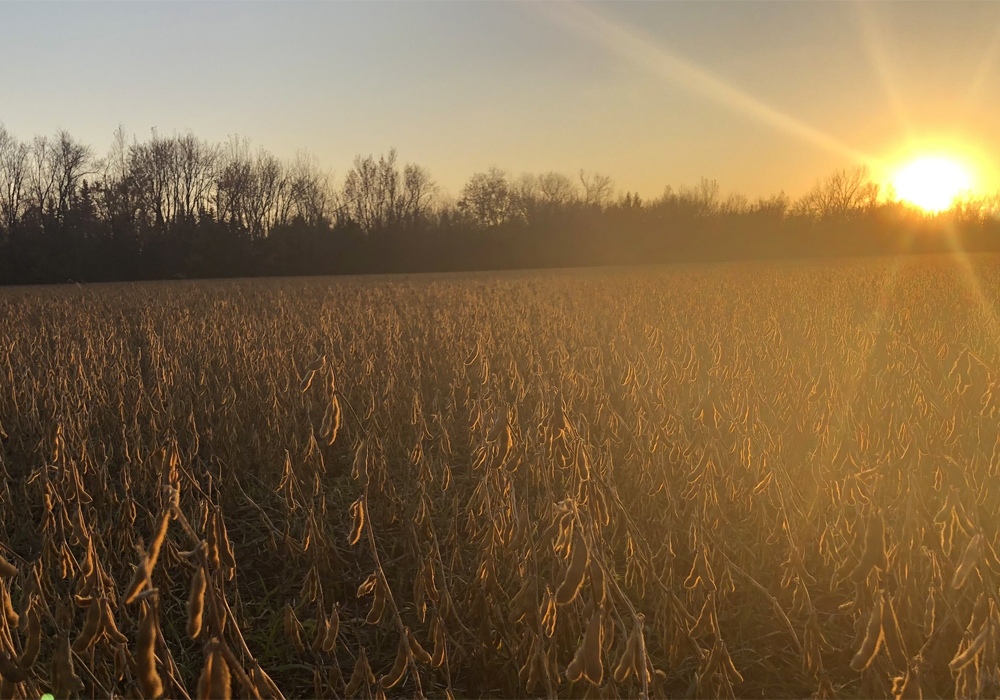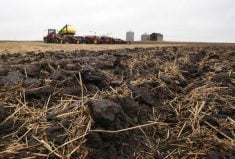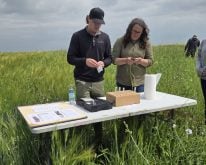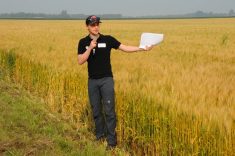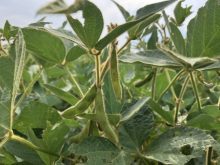After weeks of minimal progress, farmers in Manitoba and North Dakota are getting soybeans in the bin.
In the first week of November, 75-80 percent of the soybeans were harvested in Manitoba. That’s behind the three year average of 94 percent but much better than the third week of October, when only 25 percent of soybeans were in the bin.
Rain in September and 25-50 cm of snow in the second week of October, made it impossible for growers to get on their fields.
During the week of Oct. 25, standing water and lakes were visible on many fields in south central Manitoba. Trevor Daymond, who farms near Cypress River, Man., was able to harvest his soybeans, despite 200 mm of precipitation in September and October.
Read Also
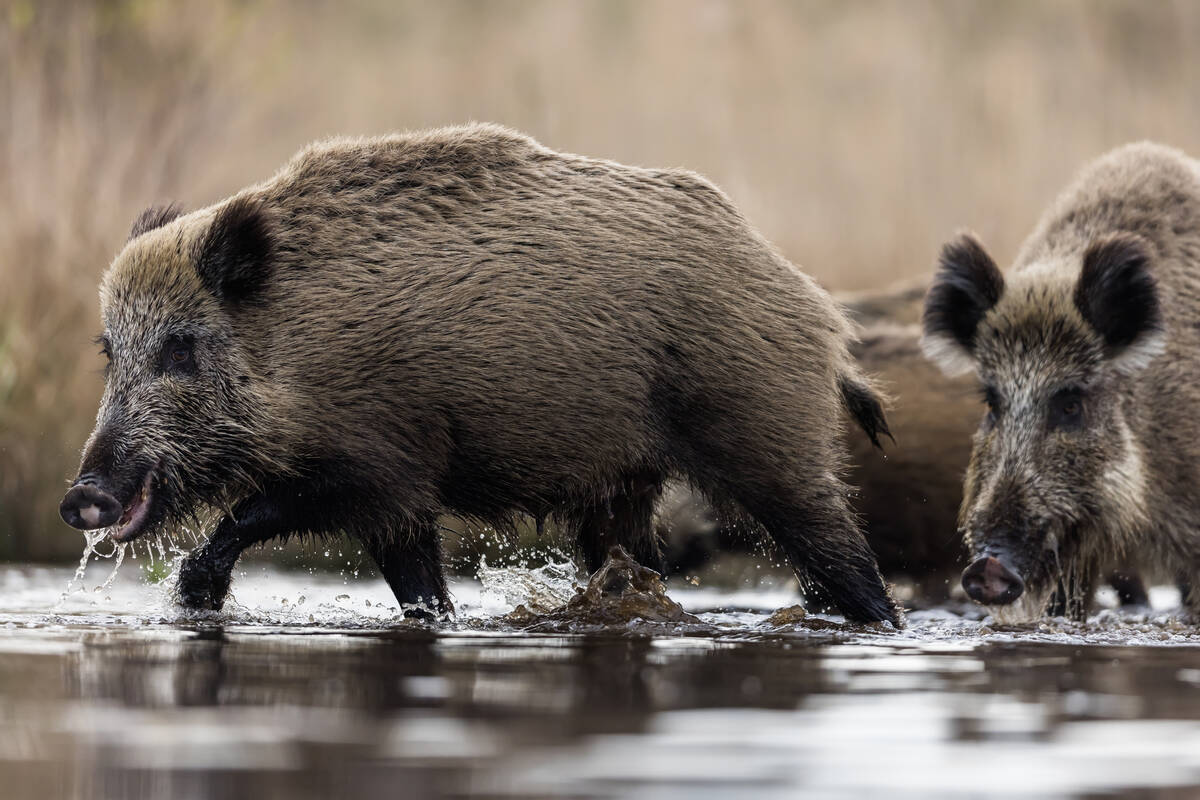
Manitoba bans wild boar possession
Manitoba has tightened the regulatory status of Eurasian wild boar in an effort to help fight back against invasive wild pigs.
Other growers had to wait longer to get combines on their fields, but conditions improved in late October thanks to colder temperatures and frozen soils.
Yields are decent, considering the wet fall and lack of moisture in the summer.
“Soybean yields reported west of the escarpment (in south central Manitoba) on recently harvested fields ranges from 30 to 60 bu. per acre,” said the provincial crop report.
Manitoba growers planted about 1.4 million acres of soybeans in 2019, so about 250,000 acres may still be out.
With favourable weather over the Remembrance Day weekend, the number could me much lower.
North Dakota farmers have more work to do.
As of early November, 56 percent of the state’s soybean crop was harvested. North Dakota farmers seeded about 5.9 million acres this year, so 2.0-2.5 million acres may be unharvested.
A portion of the soybean crop in North Dakota and Manitoba may not get combined this fall.
Tomorrow my little friends. We are bringing you home tomorrow… #Harvest19 @NDSCS_Ag @RDOTonyK pic.twitter.com/U9ntKKXBDv
— Jacob L Maurer (@RDOJacobM) November 7, 2019
Farmers who have fences around their land might be tempted to put cattle in a field of soybeans.
That’s not a great idea.
“Ammonia toxicity is a threat to cattle that overconsume soybeans,” said Karl Hoppe, livestock systems specialist with North Dakota State University extension. “Whether it’s a pile of harvested soybeans lying on the ground or an unharvested soybean field… eating too many soybeans can lead to dead cattle.”
Cattle can eat about 1 – 1.5 kg of soybeans per day, as part of a balanced ration, Hoppe wrote in an article on the NDSU website.
“After four pounds (1.8 kg) of soybeans in a mature cow ration, the oil content of the ration starts to interfere with digestion by the rumen microbes. When the oil content of the ration gets above seven to eight percent, the oil becomes toxic to rumen microbes.”
Contact robert.arnason@producer.com


